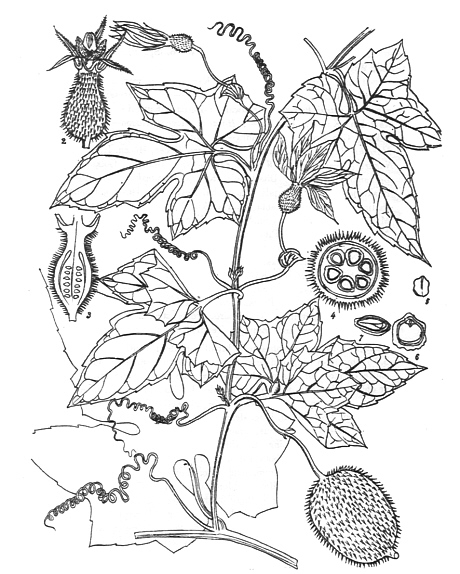

Zitierweise / cite as:
Carakasaṃhitā: Ausgewählte Texte aus der Carakasaṃhitā / übersetzt und erläutert von Alois Payer <1944 - >. -- Anhang A: Pflanzenbeschreibungen. -- Momordica dioica Roxb.ex Willd. -- Fassung vom 2007-07-28. -- URL: http://www.payer.de/ayurveda/pflanzen/momordica_dioica.htm
Erstmals publiziert: 2007-07-28
Überarbeitungen:
Anlass: Lehrveranstaltung SS 2007
©opyright: Dieser Text steht der Allgemeinheit zur Verfügung. Eine Verwertung in Publikationen, die über übliche Zitate hinausgeht, bedarf der ausdrücklichen Genehmigung des Verfassers
Dieser Text ist Teil der Abteilung Sanskrit von Tüpfli's Global Village Library
WARNUNG: dies ist der Versuch einer
Übersetzung und Interpretation eines altindischen Textes. Es ist keine
medizinische Anleitung. Vor dem Gebrauch aller hier genannten Heilmittel wird
darum ausdrücklich gewarnt. Nur ein erfahrener, gut ausgebildeter ayurvedischer
Arzt kann Verschreibungen und Behandlungen machen!
Falls Sie die diakritischen Zeichen nicht dargestellt bekommen, installieren Sie eine Schrift mit Diakritika wie z.B. Tahoma.
Verwendete und zitierte Werke siehe: http://www.payer.de/ayurveda/caraka0001.htm

Abb.: Momordica dioica Roxb.ex Willd.
[Bildquelle: Kirtikar-Basu, ©1918]
Drury:
"Momordica dioica (Roxb.) Do. Erimapasel, Mal. Paloopaghel, Tam. Agakara, Tel.
Description.—Climbing, diaecious; root tuberous; stems glabrous ; leaves long-petioled, cordate at the base, from entire to 3-4 lobed, toothed, upper side slightly scabrous, under smooth or nearly so; peduncles slender, with entire bracteoles, male with the bracteole close to the flower, and concealing the lower part, female one small near the base; fruit ovate, muricated ; seeds oval, surrounded with large red aril; flowers large, yellow. Fl. Sept.—Nov.— W. & A. Prod. i. 348.— Wight Icon. t. 505, 506.—Rheede, viii. t. 12.------Peninsula.
Medical Uses.—Of this species there are several varieties, differing chiefly in the forms of the leaves. The young green fruits and tuberous roots of the female plants are eaten by the natives. They sometimes weigh from 2 to 3 lb. Rheede says that this plant is truly cephalic, for mixed with cocoanut, pepper, red sandal, and other ingredients, and applied in the form of liniment, it stops all pains in the head. The root, which is mucilaginous to the taste, is prescribed by Hindoo practitioners in the form of electuary in haemorrhoids.—Ainslie. Rheede."
[Quelle: Drury, Heber <1819 - 1872>: The useful plants of India : with notices of their chief value in commerce, medicine, and the arts. -- 2d ed. with additions and corrections. London : Allen, 1873. -- xvi, 512 p. ; 22 cm. -- s.v.]